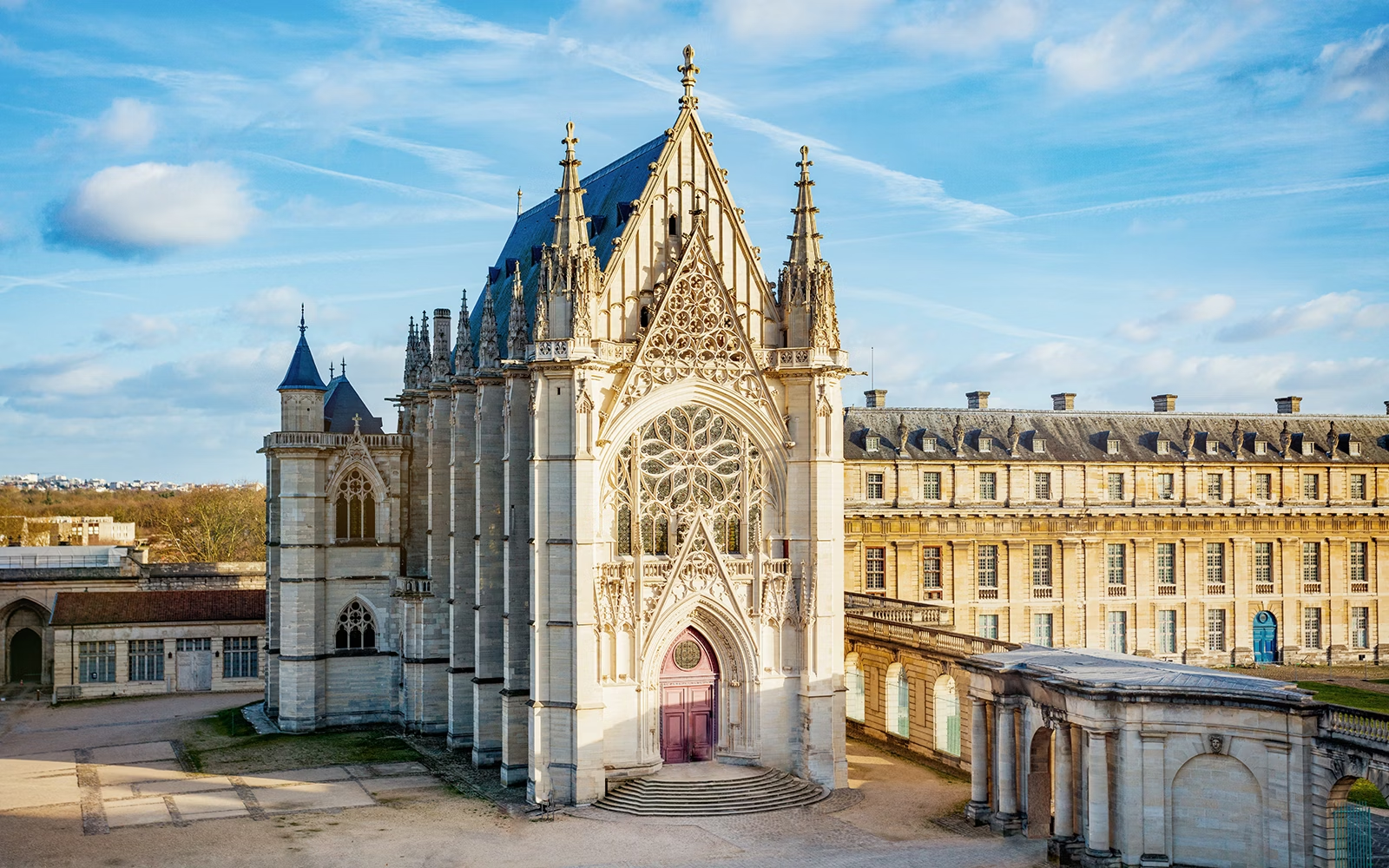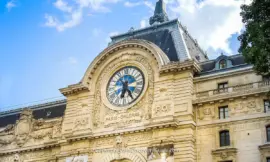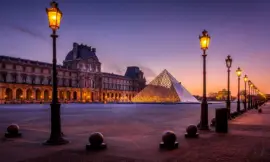Table of Contents
Here’s a complete guide to La Sainte Chapelle in Paris—one of the most stunning examples of Gothic architecture in Europe, and undoubtedly among the top five Gothic churches ever constructed.
This 13th-century royal chapel was built to house relics from the crucifixion of Jesus. It’s a breathtaking architectural masterpiece that belongs on any itinerary alongside iconic landmarks like Notre Dame and the Basilica of St Denis.
Famous for its dazzling stained-glass windows, which take up almost the entire height of the walls, Sainte Chapelle is an awe-inspiring destination you won’t want to miss.
This guide covers everything you need to know before visiting—from the best times to go, to what to look out for once you’re there.
In addition to practical advice, you’ll also find a detailed description of what makes this church so remarkable. Whether it’s your first or fifth time in Paris, Sainte Chapelle deserves a spot on your list.
Sainte Chapelle truly is a marvel. I hope you enjoy your visit as much as we did.
Why Visit La Sainte Chapelle Paris
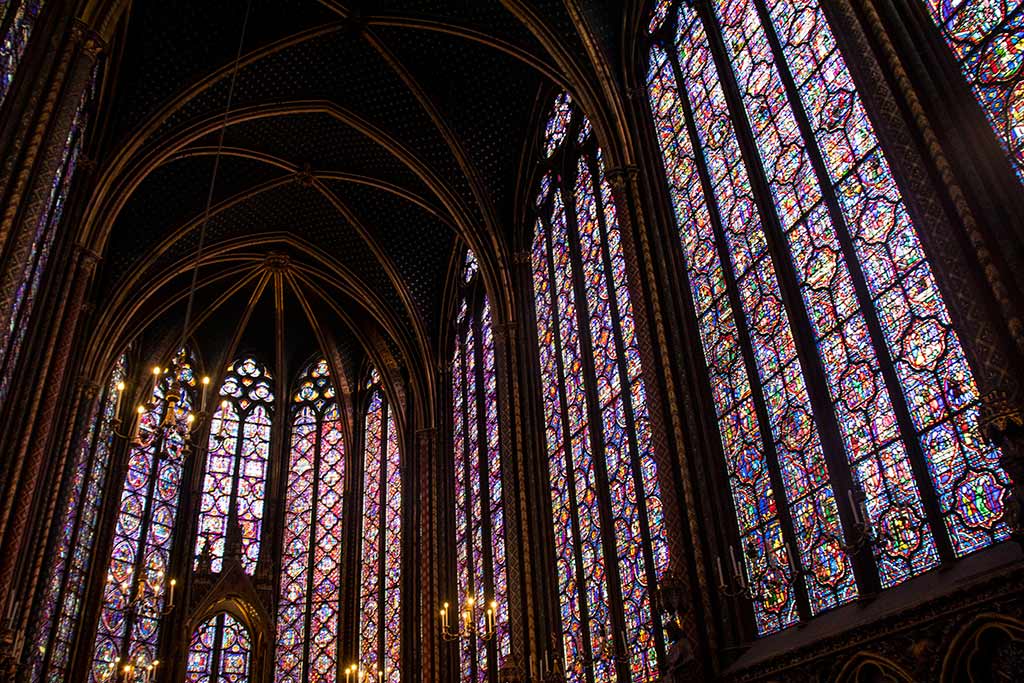
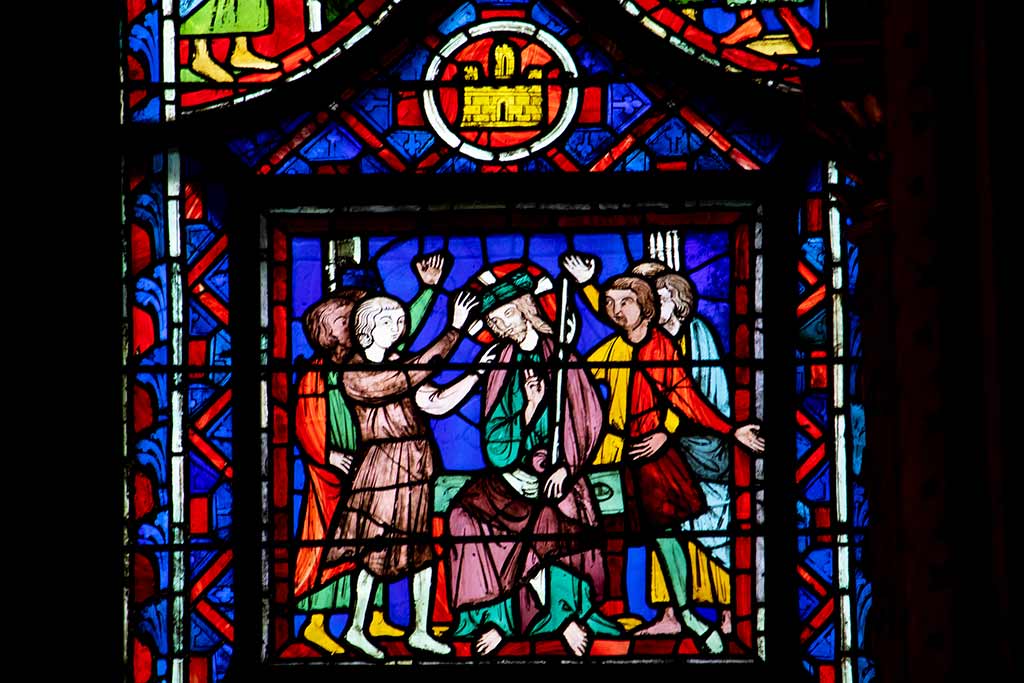
La Sainte Chapelle is one of the crowning jewels of medieval Gothic architecture. Its stained-glass windows are legendary, rivaled only by those of Chartres Cathedral.
If you’re exploring religious or historical sites in Paris, Sainte Chapelle stands proudly beside Notre Dame and the Basilica of St Denis as an essential stop. The interplay of light through the colored glass creates a celestial ambiance like no other.
Facts About Sainte Chapelle Paris

Sainte Chapelle drew inspiration from Charlemagne’s Palatine Chapel in Aachen, which dates back to the 8th century.
Construction was rapid by medieval standards—completed in just six years, from 1242 to 1248. Unlike many other Gothic churches, its architectural style is remarkably cohesive due to this short timeline.
The structure is divided into two levels: the lower chapel was intended for palace staff and servants, while the upper chapel was exclusively reserved for the royal family.
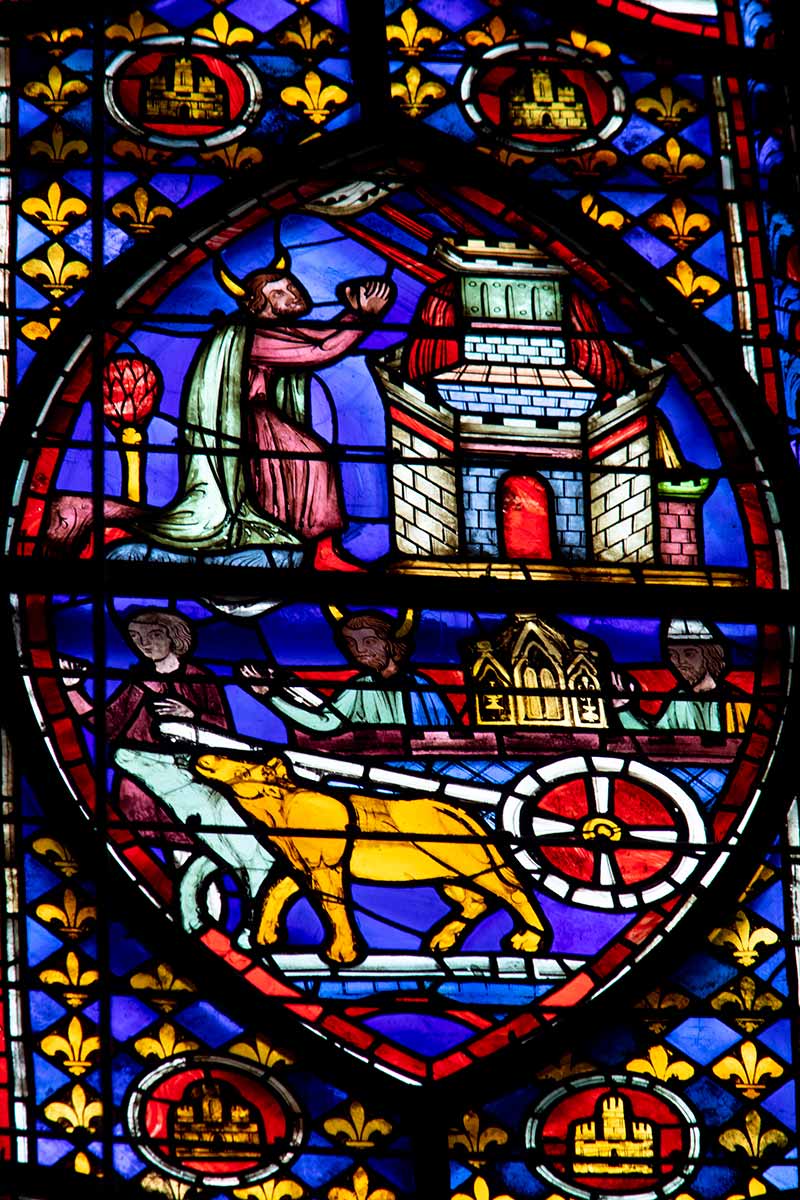
Though it’s no longer used for religious services—it was deconsecrated during the French Revolution—its grandeur and spiritual aura remain undiminished.
You might see it spelled Sainte-Chapelle, Sainte Chapelle, or even abbreviated as Ste Chapelle. English speakers sometimes refer to it as St Chapelle.
Sainte Chapelle History
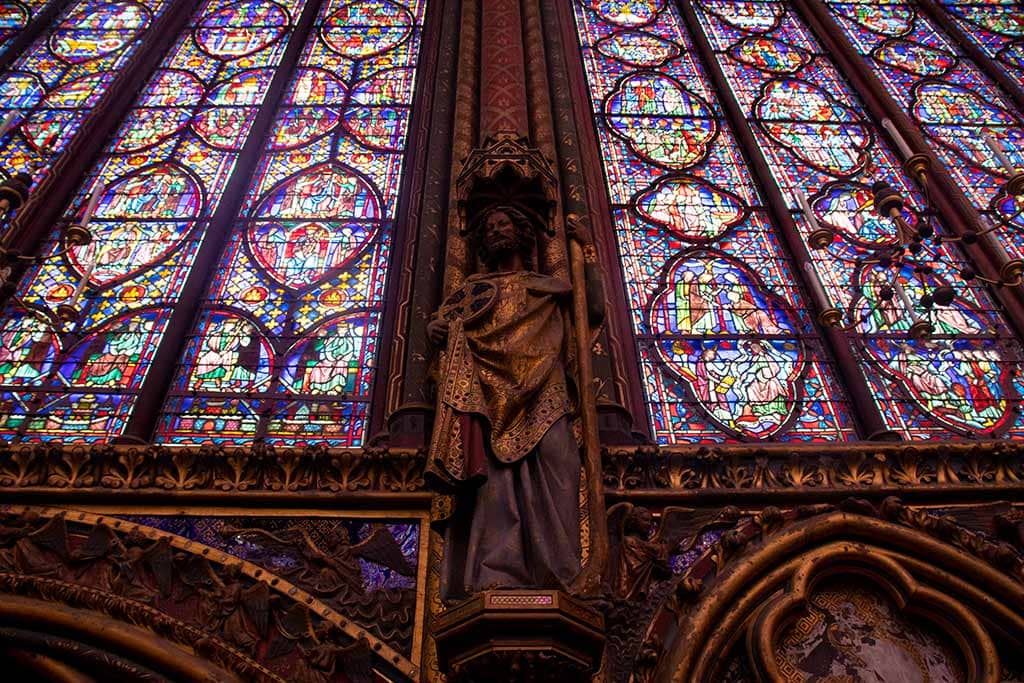
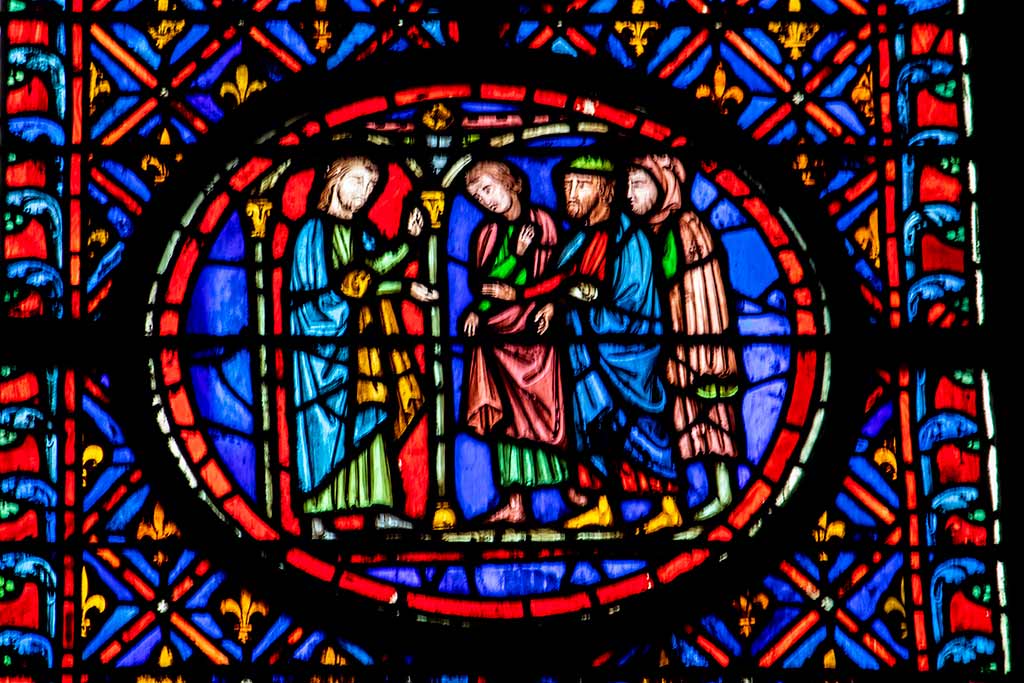
Sainte Chapelle, meaning “Holy Chapel,” was commissioned by King Louis IX (Saint Louis) of France to house a remarkable collection of relics he had purchased in 1235. Among them were the Crown of Thorns and fragments of the True Cross—items believed to be from the crucifixion of Christ.
Other sacred objects in the collection included the Holy Lance, believed to have pierced Jesus’ side, and the Holy Sponge, soaked in vinegar and offered to him during the crucifixion. These relics were originally stored in a specially constructed reliquary within the Upper Chapel.

Through the centuries, the chapel saw various changes, including architectural additions like a staircase that was later removed. However, its most significant transformation occurred during the French Revolution, when the church was secularized and its function as a place of worship ended.
The revolutionaries removed the relics and destroyed many parts of the structure, including its spire. Some of the sacred artifacts were eventually relocated to Notre Dame Cathedral.
What To See In La Sainte Chapelle Paris
Sainte Chapelle Architecture

Sainte Chapelle’s architecture is a shining example of the Rayonnant Gothic style, a period marked by an emphasis on height, light, and the use of expansive stained-glass windows. Construction began in the 1240s, during the peak of Gothic design innovation in France.
The emphasis on verticality and illumination is evident the moment you step inside. The supporting walls are minimal, replaced by towering windows framed by delicate tracery. The Upper Chapel in particular feels like it’s made entirely of light and color.
This stylistic approach contrasts with earlier Gothic buildings like the Basilica of St Denis, which pioneered many of the techniques refined at Sainte Chapelle. Here, the decorative detailing becomes the star of the show, from its ribbed vaults to sculpted doorways and columns.
Sainte Chapelle Stained Glass
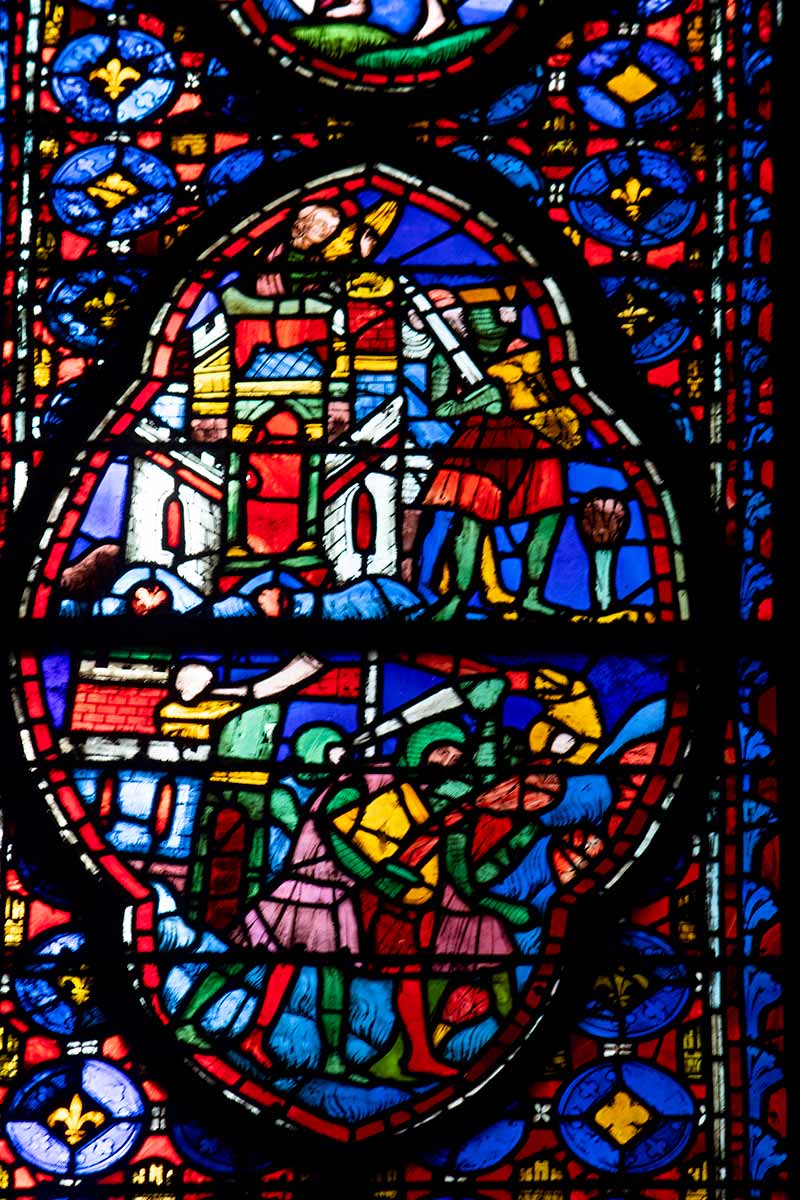
The 15 immense stained-glass windows in the Upper Chapel are the true highlight of Sainte Chapelle. Rising to a height of 15 meters (about 50 feet), they cover nearly every inch of the walls. They narrate over 1,100 Biblical scenes, beginning with Genesis and ending with the Resurrection of Christ.
These windows were designed not only as a testament to faith but also as a demonstration of Louis IX’s power and piety. They’re a vivid reminder of how light and color were used to inspire awe and devotion in medieval worshippers.
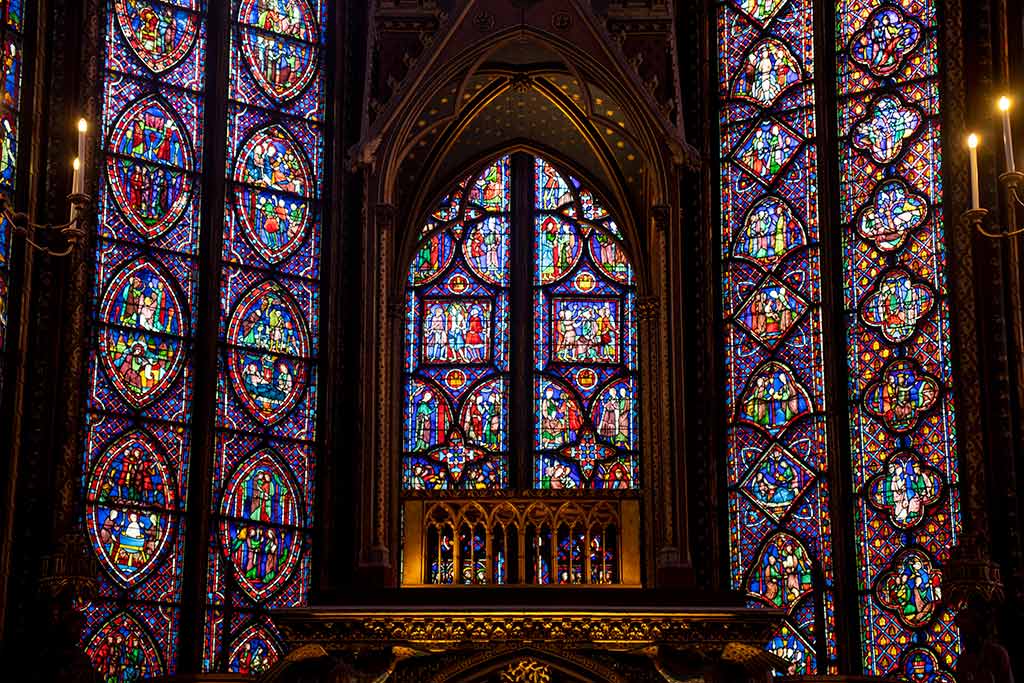
Remarkably, about two-thirds of the original 13th-century glass has survived. The remaining panels have been restored with meticulous care, especially after the damage sustained during the Revolution.
Sainte Chapelle Rose Window
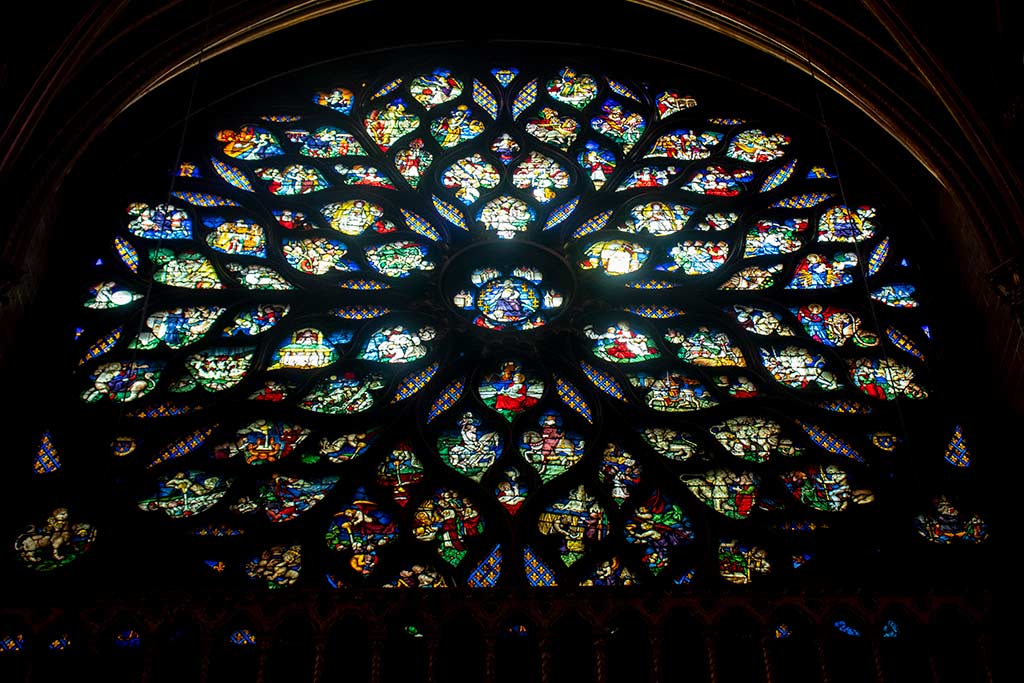
The rose window above the west entrance was added later—around 1490—and showcases the Flamboyant Gothic style, which is characterized by intricate and flowing stone tracery. This large window is a dramatic contrast to the older stained glass in the chapel.
Unlike the deep, jewel-toned panels of the original windows, the colors in the rose window are slightly softer and less saturated, reflecting the different techniques and aesthetic of the later period.
This magnificent window illustrates the Last Judgment, drawn from the Book of Revelation. It includes vivid depictions of figures such as the multi-headed Beast and the Whore of Babylon, providing both theological symbolism and visual drama.
Other Details in Sainte Chapelle
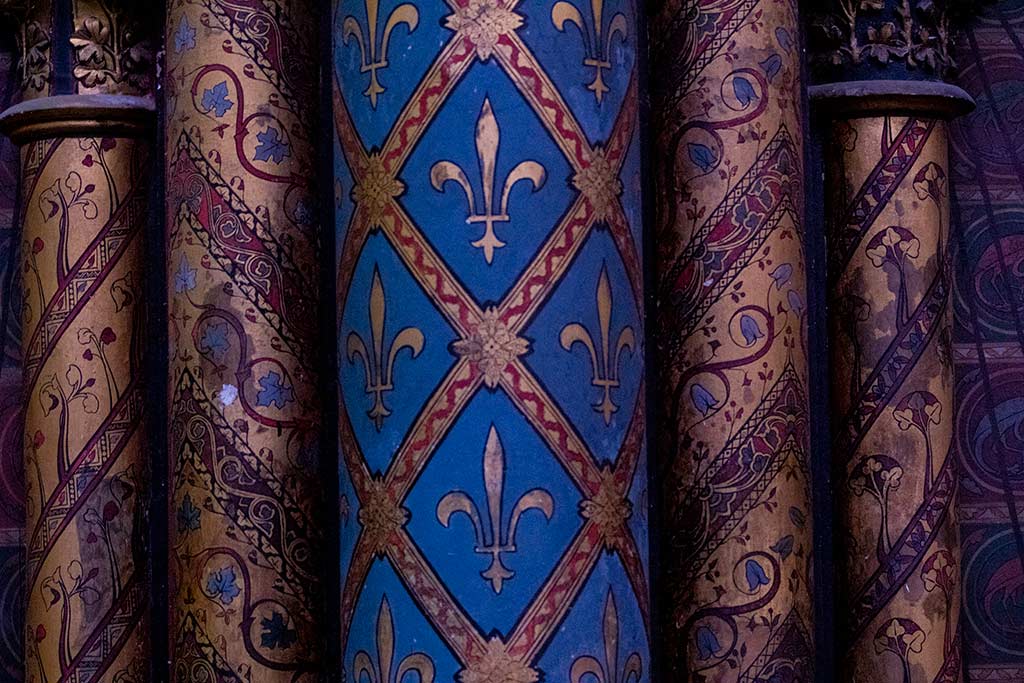

While the stained glass captures most of the attention, other features of Sainte Chapelle are equally worthy of admiration. The vaulted ceiling, painted deep blue and adorned with golden stars, resembles a night sky and adds to the sacred ambiance.
Keep an eye out for the finely detailed sculptures, especially the statues of the Twelve Apostles lining the interior. Each one stands on a decorative pedestal and is painted in rich colors, adding character and dimension to the space.
The painted columns and walls also carry the fleur-de-lis, a symbol of the French monarchy. These details, though smaller in scale, complete the immersive medieval atmosphere of the chapel.
Sainte Chapelle – The Lower Chapel
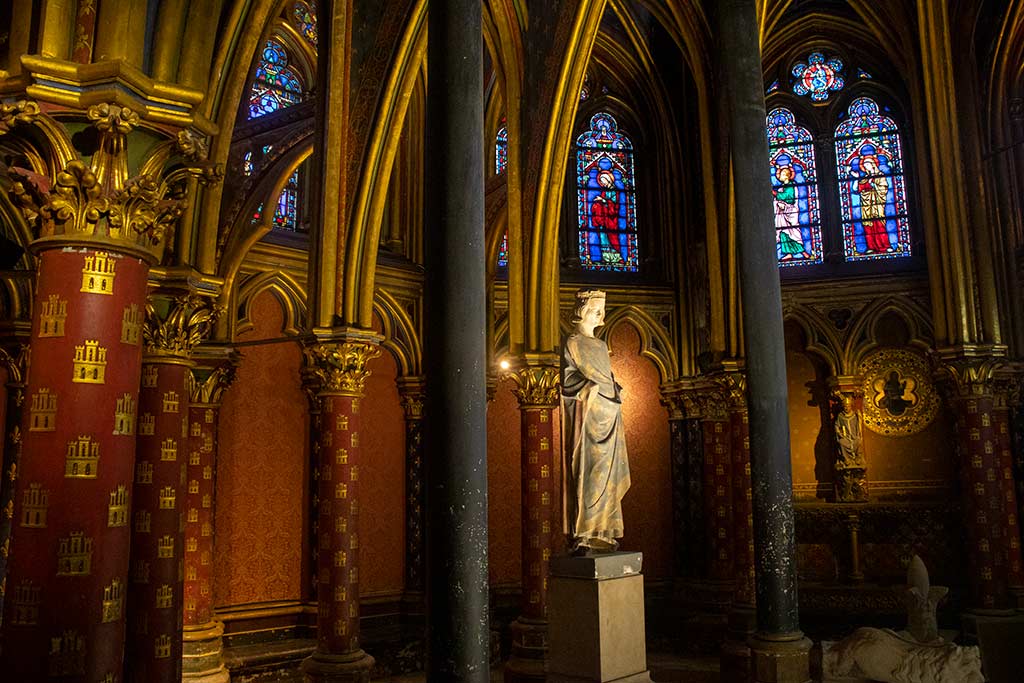
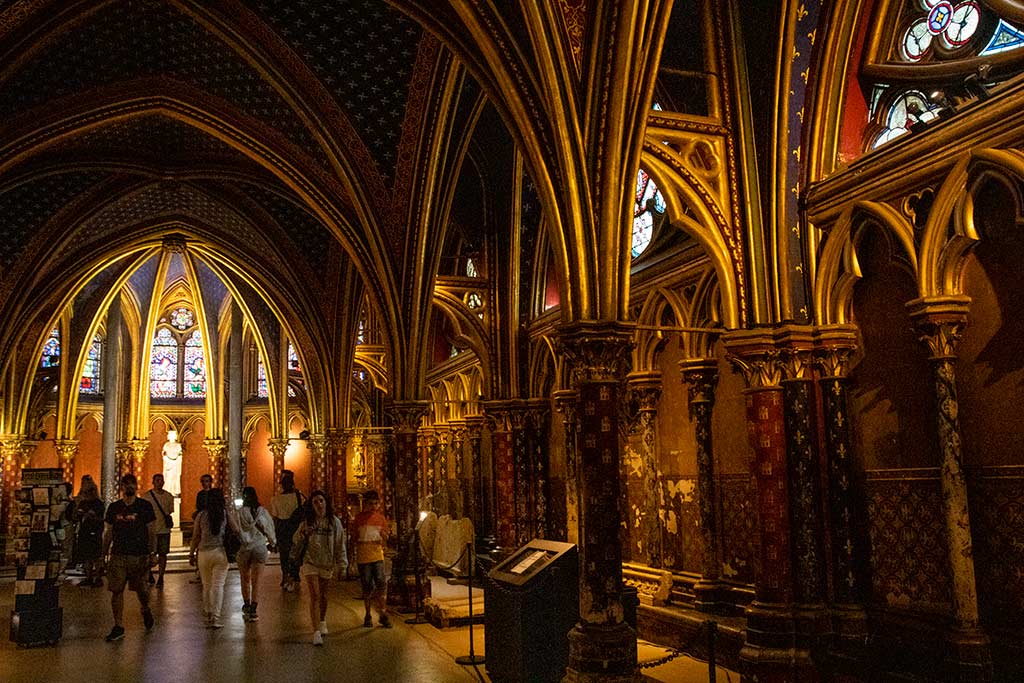
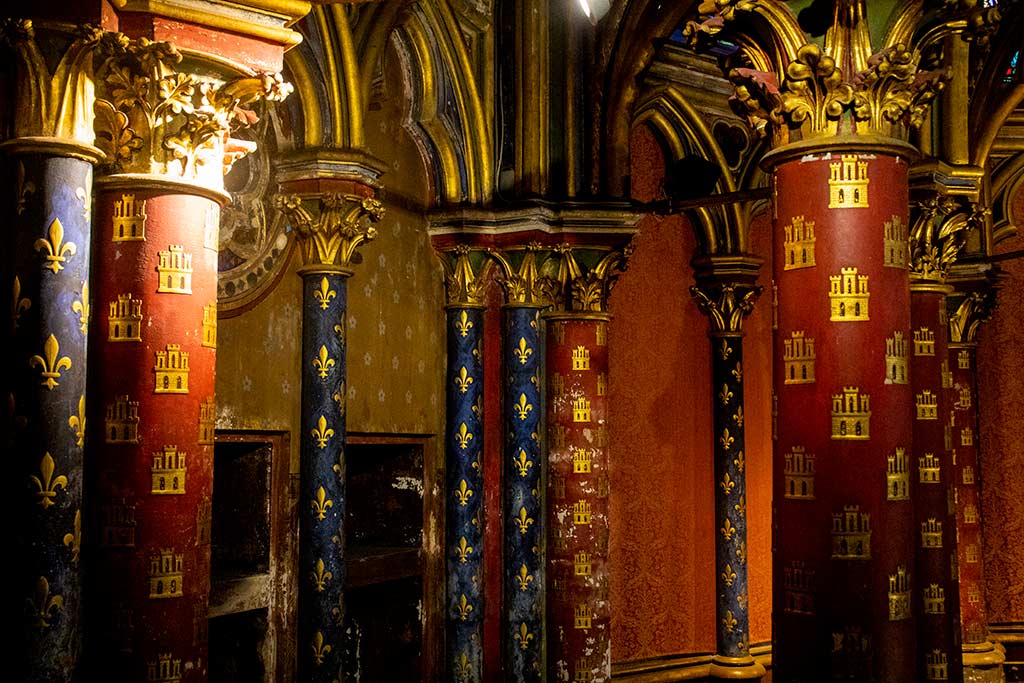
The Lower Chapel (Chapelle Basse) is the first space visitors encounter. Designed for palace servants and lower-ranking clergy, it’s surprisingly ornate for a “secondary” space.
Vibrant paintings cover the columns and vaulted ceilings, depicting patterns and symbols closely associated with royal imagery. Despite being more subdued in scale than the Upper Chapel, the Lower Chapel’s ambiance is intimate and deeply reverent.
Today, the Lower Chapel also hosts the gift shop, offering books, souvenirs, and items related to Sainte Chapelle and Parisian history. Even if you’re not looking to purchase anything, it’s worth lingering to admire the artistry here before ascending to the Upper Chapel.
La Sainte Chapelle Paris – The Terrace
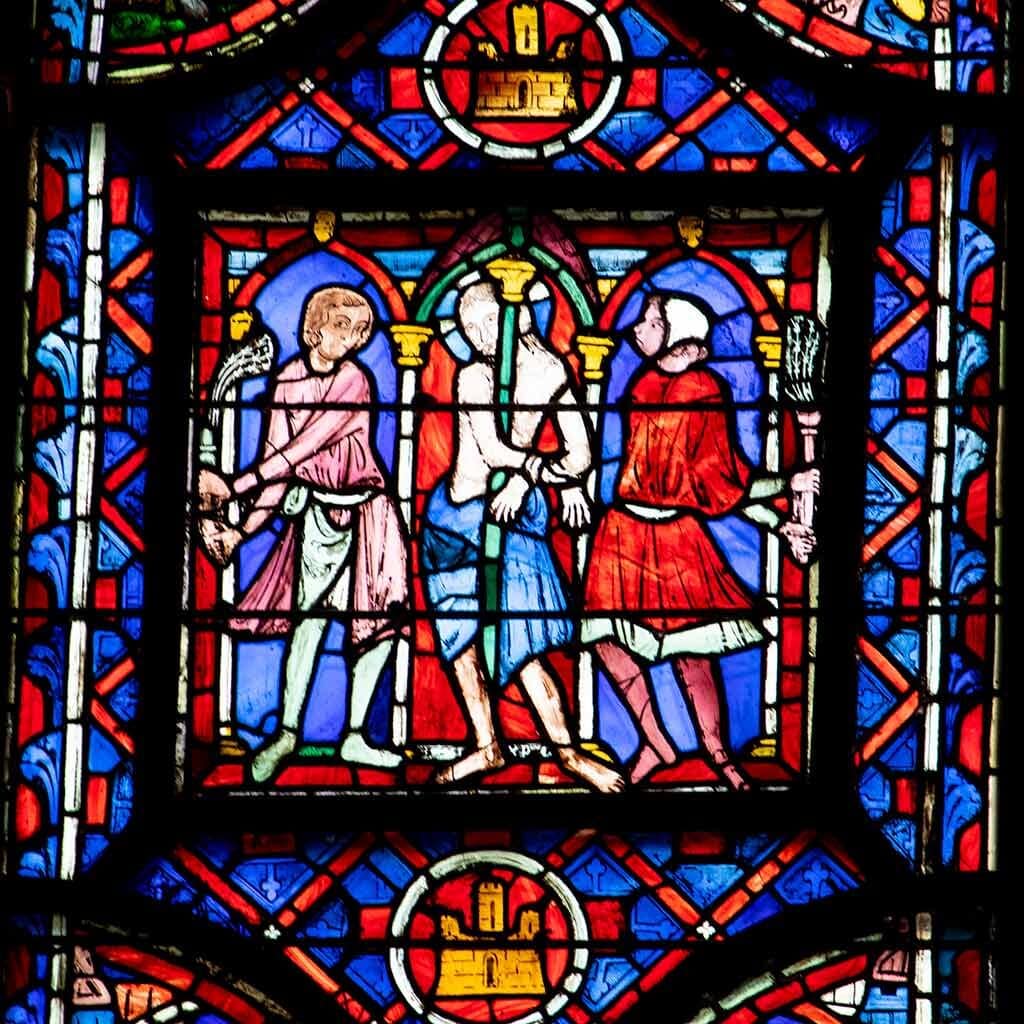
On a previous visit to Sainte Chapelle, the terrace adjacent to the Upper Chapel was accessible and offered a close-up look at the beautifully carved external doorway. Unfortunately, during more recent visits, this area has been under restoration and closed to the public.
When open, this terrace provides a rare chance to appreciate the exterior craftsmanship of the chapel up close. The stone carvings and sculptural details rival those inside the chapel, often missed by hurried visitors.
If the terrace is accessible during your visit, be sure to explore it—it’s one of those hidden gems that rewards a curious eye.
La Sainte Chapelle Paris – Top Visitor Tip
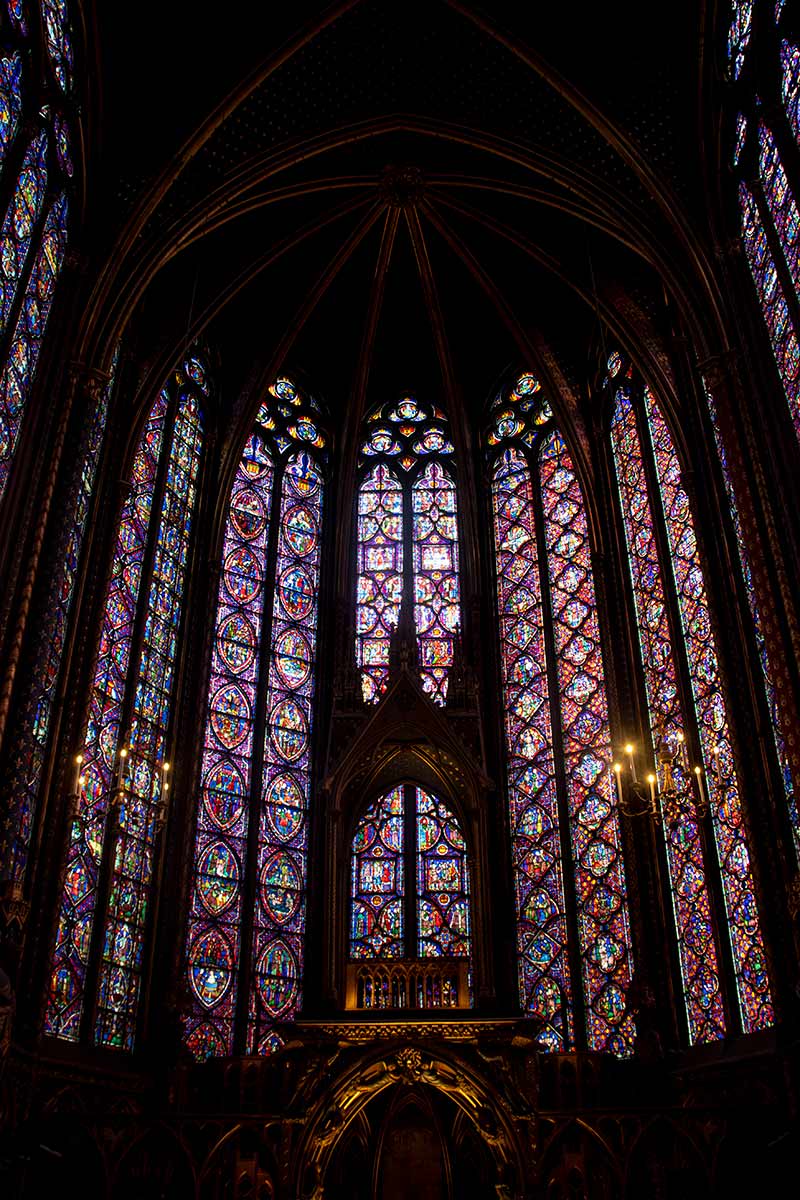
Many visitors rave about Sainte Chapelle’s stained glass when sunlight streams through the windows, and rightly so—the play of light can be dazzling. I witnessed this myself during a sunny visit back in 2000, and it was truly unforgettable.
However, don’t be discouraged if your visit falls on a cloudy day. When I returned in 2022 under overcast skies, the glass looked even richer and more vibrant. The diffused light deepened the color tones, creating a moodier, almost mystical experience.
So regardless of the weather, Sainte Chapelle offers a spectacular visual journey. In fact, if you’re searching for something to do in Paris on a rainy day, this chapel makes for a fantastic indoor retreat that won’t disappoint.
Best Time to Visit Saint Chapelle

As with many major attractions in Paris, early morning or late afternoon tend to be the quietest times to visit Sainte Chapelle. That said, popularity can still make those times crowded, especially during peak tourist season.
During my last visit, I chose a 17:30 time slot, thinking the crowds would be smaller. I was surprised to find the chapel bustling with people. When I checked earlier time slots like 09:00 and 09:30, they appeared equally booked. However, early mornings might attract fewer walk-up visitors, which could mean a slightly calmer experience.
If you can, aim for a weekday morning visit outside of school holidays. That combination gives you the best chance of enjoying the serene beauty of the stained glass with fewer distractions.
Does Sainte Chapelle Have Mass Services?
Sainte Chapelle has not been a functioning church since the French Revolution. It was officially deconsecrated during that period and now operates as a historic monument under national administration.
So while you won’t find any religious services held there today, its spiritual significance and architectural glory still inspire awe and reverence among visitors from around the world.
Classical Music Concerts at Sainte Chapelle
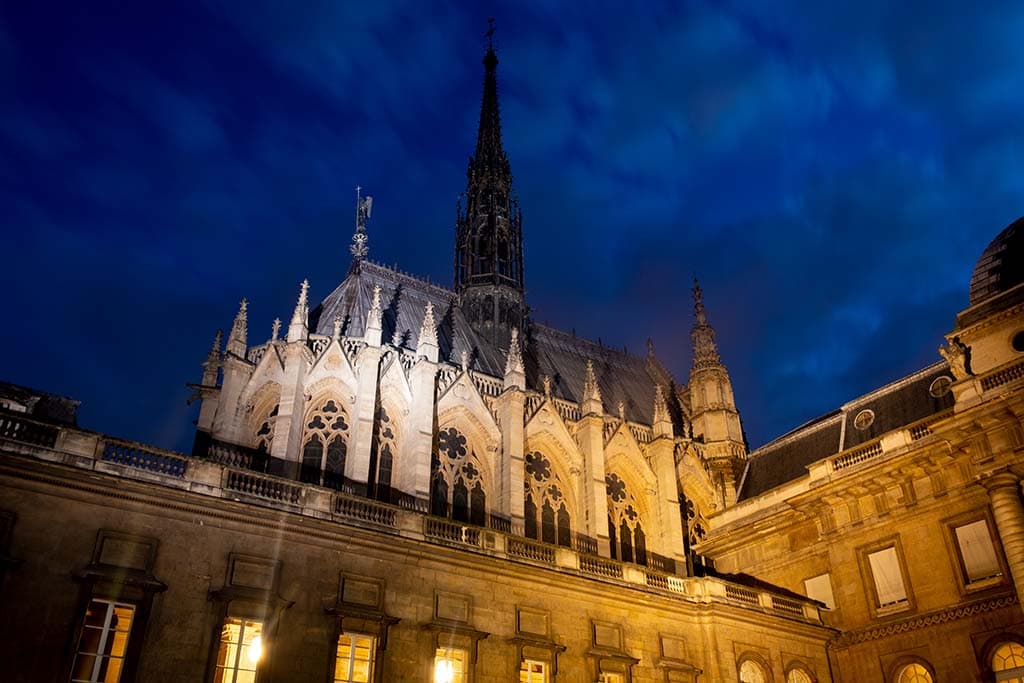
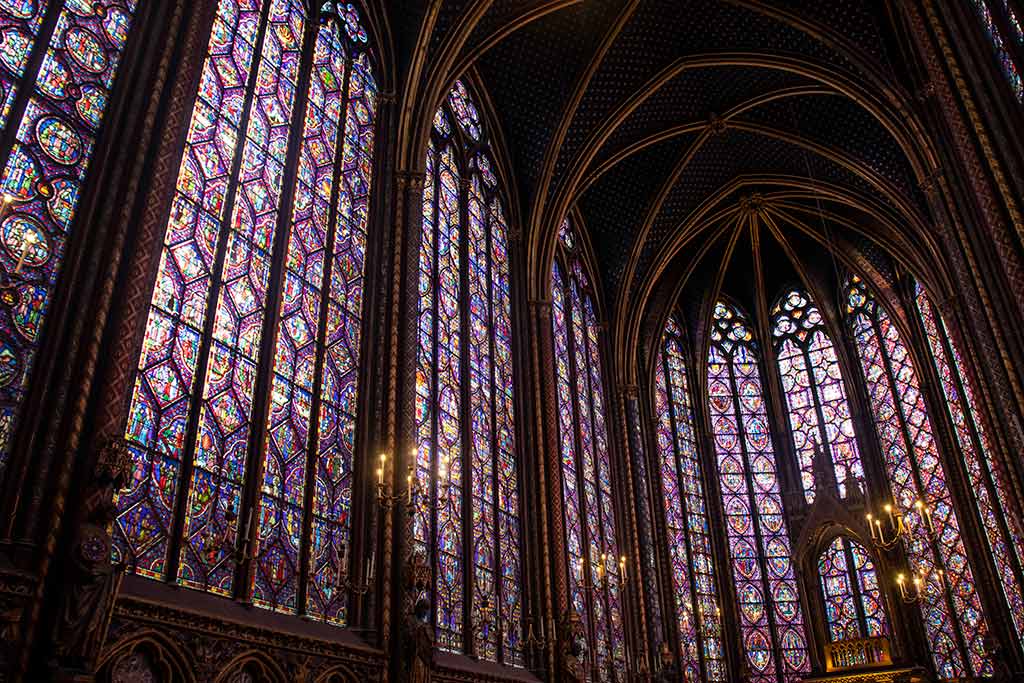
Sainte Chapelle’s acoustics and ambiance make it a perfect venue for classical music performances. Evening concerts are regularly held in the Upper Chapel, often featuring beloved pieces by composers like Vivaldi, Mozart, Schubert, and Bach.
Audience size is limited to around 200 people, allowing for an intimate and atmospheric experience. Small chamber ensembles and soloists are typically featured, and the backdrop of glowing stained glass enhances the emotional power of the music.
If you’re a classical music lover—or just want a truly unforgettable cultural evening in Paris—a concert here should be high on your list.
Visiting Saint Chapelle Paris
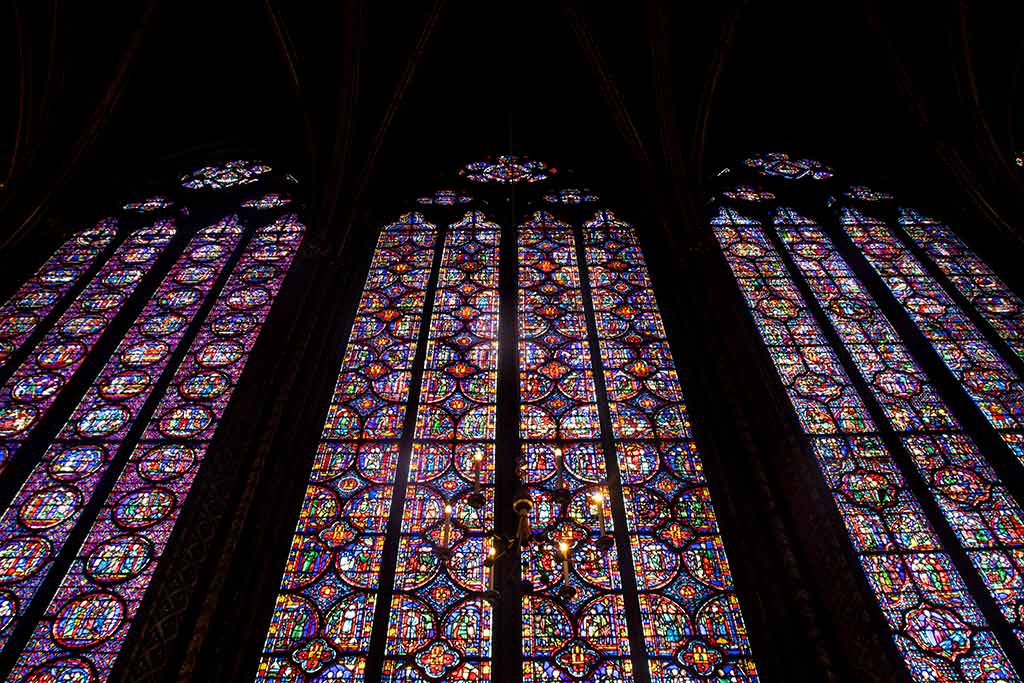
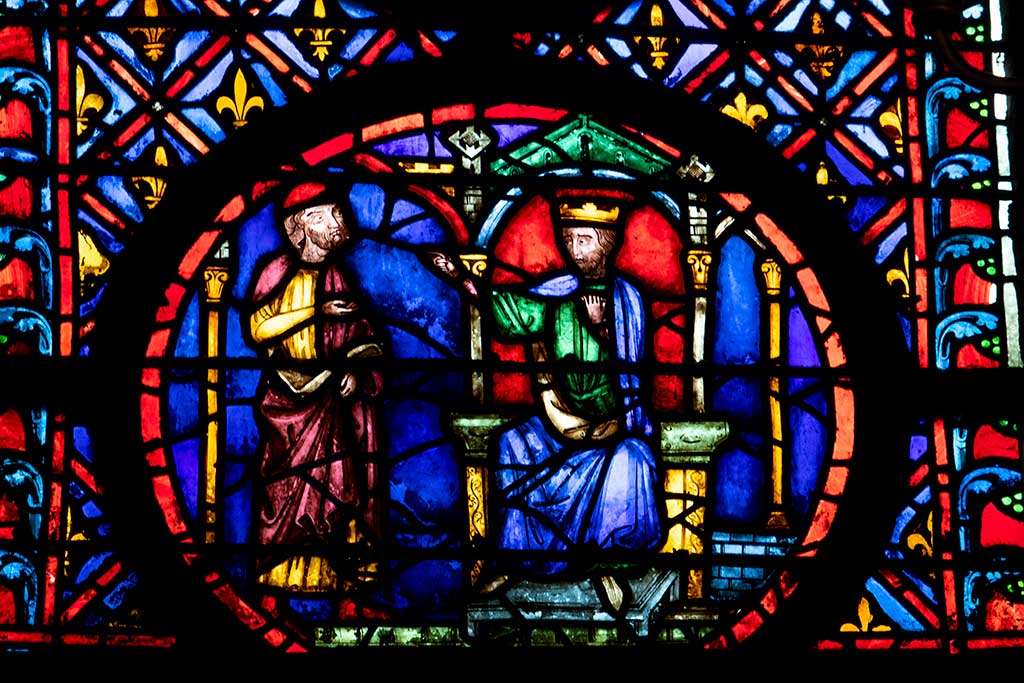
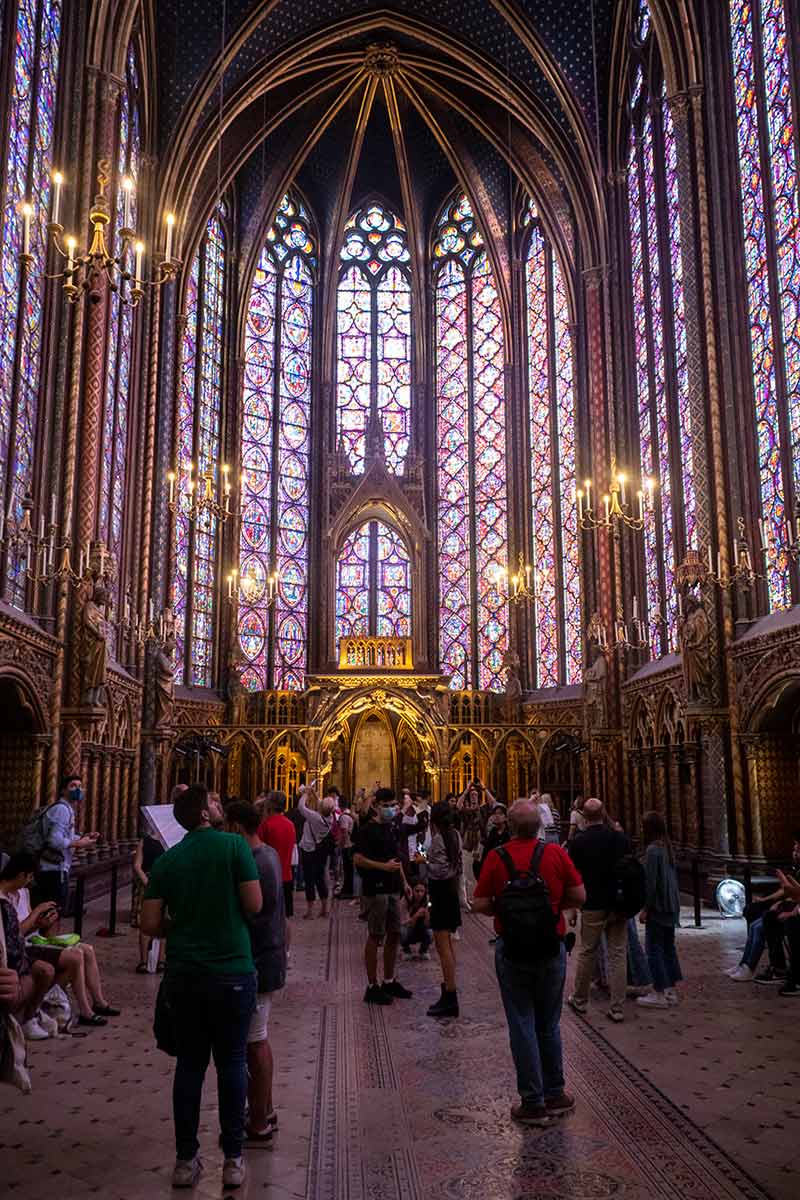
St Chapelle Entrance Fee
The general admission fee for adults is €11.50. Visitors under 25 years old from the EU can enter for free upon showing valid ID, and children also enjoy free access.
St Chapelle Opening Times
From April 1st to September 30th, Sainte Chapelle is open daily from 09:00 to 19:00. During the off-season (October 1st to March 31st), the hours change to 09:00 to 17:00.
Sainte Chapelle Tickets
You can purchase tickets online in advance or at the door. However, booking ahead is recommended, especially during holidays or weekends, as the lines at peak hours can be long.
Combo tickets are also available for nearby attractions like the Conciergerie, which is just a short walk away. Purchasing both together provides a small discount and allows for a seamless historical tour of the Île de la Cité.
Saint Chapelle Entrance
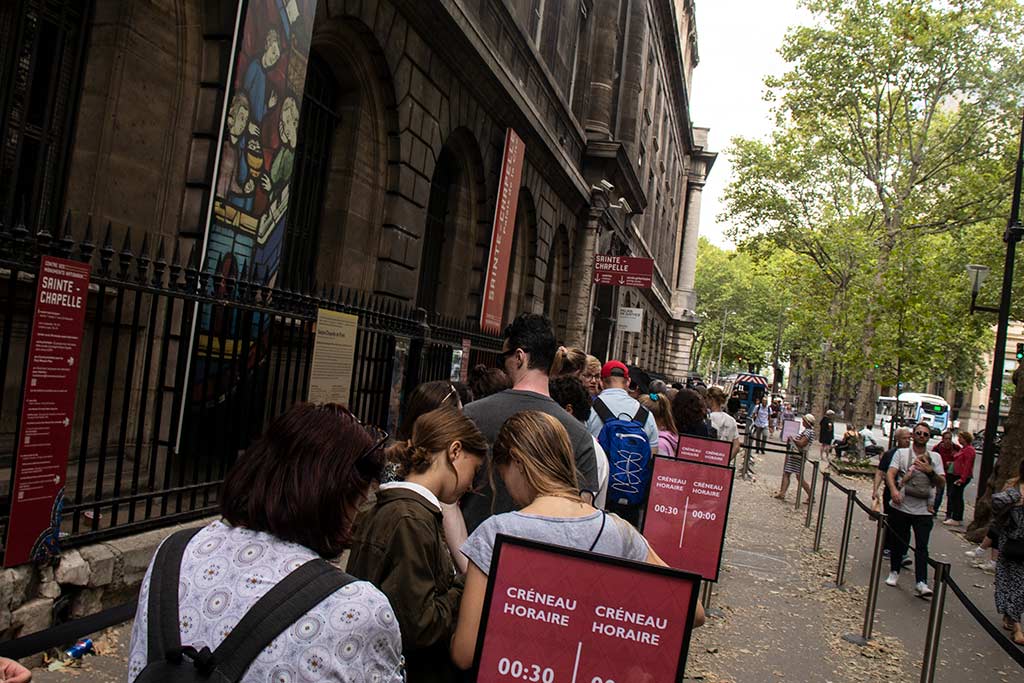
The entrance to Sainte Chapelle is located within the Palais de Justice complex on the western side of Boulevard du Palais. Security checks are required before entry, so it’s best to arrive a few minutes before your scheduled time slot.
Once inside, you’ll pass through the Lower Chapel first, before ascending to the more famous Upper Chapel with its glowing stained glass walls.
Can You Take Bags Into Sainte Chapelle?
Only small bags are permitted inside. Large or bulky items are not allowed and there is no storage facility on-site. Every visitor’s bag is subject to security screening.
To make your visit easier and quicker, bring only essentials. A compact backpack or shoulder bag with basic items like a phone, wallet, and camera is ideal.
Is There Locker Storage at Sainte Chapelle?
No, Sainte Chapelle does not offer any locker or baggage storage services. Plan accordingly and avoid bringing heavy luggage or large bags during your visit.

